So, you’re thinking about visiting Suriname? Well, you’ve come to the right place! If you’re wondering when would be the best time to plan your trip, let’s talk about the weather in Suriname so you can make the most of your visit.
Suriname is a beautiful country located on the northeastern coast of South America. It’s known for its diverse culture, stunning natural landscapes, and vibrant wildlife. But when it comes to the weather, it’s good to know what to expect. Suriname experiences a tropical rainforest climate, so you can expect high temperatures and humidity throughout the year. However, the country also has two distinct seasons: the dry season and the wet season. The dry season generally falls between February and April, offering sunny days and lower chances of rainfall. On the other hand, the wet season, which lasts from May to January, brings heavier rainfall and more overcast skies. But don’t worry, even during the wet season, you’ll still get plenty of time to explore and enjoy Suriname’s beauty. In fact, the rain showers are often short-lived and don’t typically interfere too much with outdoor activities.
So, now that you have a general idea of the different seasons in Suriname, you can start planning your trip accordingly. In our upcoming article, we will dive deeper into each season and provide you with more detailed information about what to expect during your visit. From fun activities to the best places to explore, we’ve got you covered. So stay tuned and get ready to make the most of your trip to Suriname!
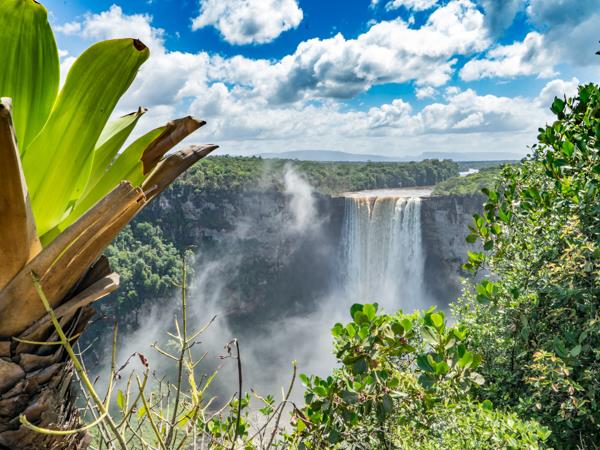
Suriname: A Tropical Paradise
Suriname, a small country nestled on the northeast coast of South America, is a hidden gem that offers a truly unique and unforgettable travel experience. From its stunning natural landscapes to its vibrant cultural heritage, Suriname has something to offer for every type of traveler. One of the key factors to consider when planning your trip to Suriname is the weather. The country’s tropical climate, characterized by distinct dry and wet seasons, greatly impacts the traveler’s experience. In this weather guide, we will explore the best time to visit Suriname and uncover the wonders that await you in this tropical paradise.
Introduction to Suriname
Suriname, officially known as the Republic of Suriname, is the smallest country in South America, spanning an area of approximately 165,000 square kilometers. Despite its size, Suriname boasts an abundance of natural beauty, from its pristine rainforests and vast river systems to its breathtaking waterfalls and untouched beaches. Suriname is also renowned for its rich cultural heritage, with a diverse population that includes Indigenous peoples, African descendants, Asians, and Europeans. This cultural melting pot has contributed to Suriname’s unique traditions, languages, and cuisines, making it a truly fascinating destination for any traveler.
Geographical Location
Suriname is situated on the northeastern coast of South America, bordered by the Atlantic Ocean to the north, Guyana to the west, Brazil to the south, and French Guiana to the east. The country’s geographical location gives it a tropical climate, with high temperatures and humidity throughout the year. Suriname’s position near the equator ensures a relatively consistent climate, but it is still influenced by seasonal variations.
Suriname’s Rich Biodiversity
Suriname is often referred to as the “Green Heart of South America” due to its incredible biodiversity. The country is home to vast stretches of pristine rainforests, which house a staggering array of plant and animal species. Suriname’s rainforests are part of the Guiana Shield, one of the most biodiverse regions on the planet. Here, you can encounter jaguars, giant river otters, anacondas, and a myriad of bird species. Suriname’s commitment to conservation has resulted in the establishment of numerous protected areas, such as the Central Suriname Nature Reserve, which is a UNESCO World Heritage Site.
Cultural Melting Pot
Suriname’s cultural diversity is a testament to its history as a former Dutch colony and its intricate past involving the transatlantic slave trade and indentured labor from various parts of the world. Today, Suriname’s population is composed of Indigenous peoples, Creoles (African descendants), Hindustanis (descendants of Indian immigrants), Javanese, Chinese, and Europeans. This multicultural blend is evident in Suriname’s food, language, music, and religious practices. The vibrant capital city of Paramaribo offers a glimpse into this cultural tapestry, with its diverse architecture, bustling markets, and colorful festivals.
Understanding Suriname’s Climate
Suriname’s tropical climate defines the country’s weather patterns throughout the year. It is important to understand the nuances of this climate to make the most of your visit. The climate in Suriname can be categorized into two main seasons: the dry season and the wet season.
Tropical Climate Zone
Suriname falls within the tropical climate zone, characterized by high temperatures and humidity. The country experiences relatively consistent temperatures throughout the year, ranging from 24 degrees Celsius (75 degrees Fahrenheit) to 35 degrees Celsius (95 degrees Fahrenheit). The humidity levels can be quite high, especially during the wet season.
Dry and Wet Seasons
The dry season in Suriname typically runs from February to August, while the wet season spans from September to January. These seasons are influenced by the north-east trade winds and the Inter-Tropical Convergence Zone, which bring moisture-laden winds and rainfall to the region. The intensity and duration of the wet and dry seasons can vary from year to year, so it is essential to keep a close eye on weather forecasts and consult with local sources for the most up-to-date information.
Temperature Variations
Suriname experiences relatively consistent temperatures throughout the year, with only slight variations. During the dry season, temperatures can reach their peak, hovering in the range of 30 to 35 degrees Celsius (86 to 95 degrees Fahrenheit). The wet season sees slightly cooler temperatures, ranging from 24 to 28 degrees Celsius (75 to 82 degrees Fahrenheit). These temperature variations make Suriname a year-round destination for travelers seeking warm weather and an escape from colder climates.
Rainfall Patterns
The rainfall patterns in Suriname are heavily influenced by the country’s wet and dry seasons. During the dry season, rainfall is minimal, and sunny days are the norm. However, occasional showers can still occur, albeit less frequently. In contrast, the wet season brings substantial rainfall, with some areas experiencing heavy downpours. The rainforest regions receive the highest levels of rainfall, contributing to their lush and verdant landscapes. It is worth noting that despite the higher likelihood of rain during the wet season, it rarely rains continuously, and periods of sunshine can still be enjoyed.
The Dry Season: Ideal for Exploring
If you prefer sunny and dry weather for outdoor activities and sightseeing, the dry season is the best time to visit Suriname. Here’s what you can expect during this season:
Duration of the Dry Season
The dry season in Suriname typically lasts from February to August, with the least amount of rain falling during this period. However, it is important to keep in mind that weather patterns can fluctuate, and it is always advisable to check updated weather forecasts before planning your trip.
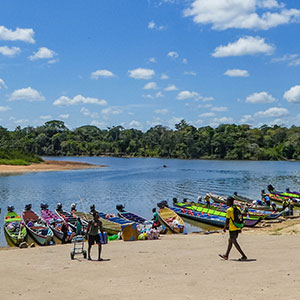
Sunny Days and Low Humidity
The dry season is characterized by sunny days, making it perfect for exploring Suriname’s natural wonders or lounging on its pristine beaches. The humidity levels are relatively lower during this season, offering respite from the intense heat and allowing for more comfortable outdoor activities.
Best Time for Outdoor Activities
The dry season provides ideal conditions for a wide range of outdoor activities in Suriname. Whether you’re interested in hiking through the rainforest, birdwatching along the riverbanks, or embarking on an adventurous river cruise, the dry season offers ample opportunities to immerse yourself in Suriname’s natural beauty. The clear skies and pleasant temperatures make it easier to navigate the diverse terrain and enjoy the country’s breathtaking landscapes.
Exploring Suriname’s Natural Wonders
During the dry season, many of Suriname’s natural attractions are easily accessible and showcase their full splendor. One such destination is the Brownsberg Nature Park, located just a few hours’ drive from Paramaribo. This protected area is a haven for nature lovers, offering stunning views, waterfalls, and a plethora of wildlife. Another must-visit destination is the Galibi Nature Reserve, known for its sea turtle nesting grounds. The dry season allows for a greater chance of witnessing these magnificent creatures as they come ashore to lay their eggs.
The Wet Season: A Tropical Experience
The wet season in Suriname may not be as popular among tourists, but it offers a unique and enchanting experience for those willing to embrace its charms. Here’s why the wet season can be an equally captivating time to visit Suriname:
Duration of the Wet Season
The wet season in Suriname typically lasts from September to January, with varying levels of rainfall during this period. The duration and intensity of the wet season can vary from year to year, so it is advisable to check the latest weather updates and plan your activities accordingly.
Lush Green Landscapes
The wet season brings a vibrant burst of life to Suriname’s landscapes. The increased rainfall nourishes the rainforests, transforming them into lush, green paradises. The foliage thrives, giving you the opportunity to witness the rainforest in all its splendor. The vibrant colors, glistening leaves, and refreshing scent of the rainforest create a truly immersive experience that is unique to the wet season.
Increased Wildlife Sightings
The wet season brings an abundance of wildlife to Suriname’s rainforests and river systems. The animals, birds, and insects thrive in the wetter conditions, offering visitors the opportunity to witness a greater variety of species. The rainforest comes alive with the calls of toucans, the rustling of monkey troops, and the occasional sighting of rare and elusive creatures, such as the jaguar or giant river otters.
Water-based Adventures
The wet season provides the perfect backdrop for water-based adventures in Suriname. The increased rainfall raises the water levels of rivers and creeks, creating prime conditions for river cruises, kayaking, and exploring the country’s extensive network of waterways. The wet season also coincides with the nesting season of sea turtles, offering a unique opportunity to witness these majestic creatures in their natural habitat.
Planning Your Travel Itinerary
When planning your trip to Suriname, there are several factors to consider in addition to the weather. Here are some tips to help you make the most of your time in this tropical paradise:
Considerations for Each Season
Both the dry and wet seasons offer their own set of advantages and considerations. The dry season provides optimal conditions for outdoor activities and exploring the rainforests, while the wet season offers lush landscapes and increased wildlife sightings. Consider your personal preferences and desired activities when deciding the best time to visit Suriname.
Popular Tourist Destinations
Suriname boasts a wide range of tourist destinations, each with its own unique attractions. Paramaribo, the capital city, is a UNESCO World Heritage Site and a blend of historic Dutch colonial architecture, vibrant markets, and cultural landmarks. Other popular destinations include Brownsberg Nature Park, the Raleighvallen Nature Reserve, and the Central Suriname Nature Reserve. Research the attractions that align with your interests and create an itinerary that allows you to explore the diverse facets of Suriname.
Must-Visit Cultural Sites
Suriname’s cultural heritage is as rich and diverse as its natural beauty. Among the must-visit cultural sites is the Maroon village of Palumeu, where you can learn about the traditions and customs of the Saramaccan Maroon tribe. Fort Zeelandia is another important landmark, offering insights into Suriname’s colonial history. Additionally, a visit to Jodensavanne, a former Jewish settlement, provides a glimpse into Suriname’s religious and cultural tapestry.
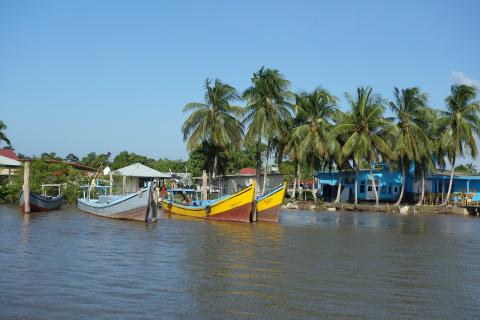
Recommended Activities and Attractions
In addition to exploring Suriname’s natural and cultural wonders, there are plenty of activities and attractions to enhance your experience. Consider embarking on a river cruise along the Suriname River, where you can spot dolphins, enjoy the scenic beauty, and visit traditional villages along the way. A visit to the Central Market in Paramaribo is a must to sample local delicacies and experience the bustling energy of the city. Additionally, Suriname offers opportunities for adrenaline-pumping activities such as ziplining, jungle survival courses, and off-road adventures.
High and Low Season Tourism
Suriname experiences fluctuations in tourist numbers throughout the year, resulting in peak and off-peak travel seasons. Understanding the implications of each season can help you plan your trip more effectively:
Peak Tourist Season
The peak tourist season in Suriname coincides with the dry season, particularly from February to March when European and North American travelers seek respite from their winter climates. During this time, popular attractions may be busier, and advance reservations are recommended for accommodations and tours. It is advisable to book your travel arrangements well in advance if you plan to visit Suriname during the peak season.
Crowds and Availability
The dry season attracts a higher number of tourists, particularly to popular destinations such as Paramaribo and Brownsberg Nature Park. Crowds may be more significant during this time, and accommodations and activities can book up quickly. To ensure availability, it is recommended to make early reservations for accommodations, guided tours, and any specific activities you wish to participate in.
Off-Peak Travel Advantages
Traveling during the off-peak season, particularly during the wet season, offers several advantages. The relatively lower number of tourists means fewer crowds and more intimate experiences at popular attractions. Accommodations and tours may also offer more flexibility and availability, allowing you to tailor your itinerary according to your preferences. Additionally, prices for accommodations and flights may be more budget-friendly during the off-peak season, providing a cost-effective option for travelers.
Budget-Friendly Options
If you are traveling on a budget or prefer a more relaxed travel experience, consider visiting Suriname during the off-peak season. Accommodation rates may be lower during this time, and flights can also be more affordable. Take advantage of discounted rates and packages offered by tour operators and explore Suriname at your own pace. Embrace the slower rhythm of the wet season and relish the serenity and tranquility that comes with fewer crowds.
Weather-Related Travel Tips
To make the most of your trip to Suriname, it is essential to be prepared for the weather conditions. Here are some weather-related travel tips to keep in mind:
Packing Essentials
When visiting Suriname, it is important to pack essentials that cater to the tropical climate. Lightweight and breathable clothing is recommended, along with comfortable footwear suitable for outdoor activities. Don’t forget to pack sunscreen, insect repellent, a hat, and sunglasses to protect yourself from the sun’s rays.
Appropriate Clothing
Due to the warm and humid weather in Suriname, it is advisable to wear lightweight and loose-fitting clothing made from natural fibers such as cotton or linen. Opt for short-sleeved shirts, shorts, skirts, and dresses to stay cool and comfortable. However, it is also prudent to carry a light sweater or jacket, as the evenings can be slightly cooler.
Protecting Yourself from Rain
During the wet season, it is crucial to be prepared for rainfall. Pack a lightweight rain jacket or poncho to protect yourself from sudden showers. It is also advisable to carry a small foldable umbrella for added protection. Waterproof bags or cases for electronic devices and travel documents are recommended to keep your belongings dry.
Staying Hydrated
The tropical climate in Suriname can be quite intense, so it is important to stay hydrated throughout your trip. Carry a reusable water bottle and ensure you drink plenty of fluids, especially when engaging in outdoor activities. It is also advisable to avoid excessive alcohol consumption and to seek shade or air-conditioned areas when necessary.
Festivals and Events
Suriname’s cultural heritage is best experienced through its vibrant festivals and events. By aligning your visit with these celebrations, you can immerse yourself in the country’s traditions and customs. Here are some major festivals and events in Suriname:
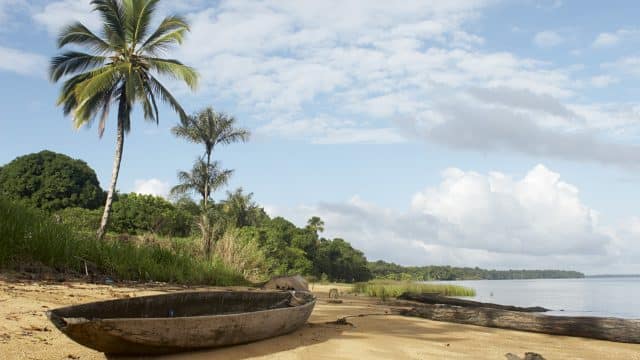
Cultural Celebrations
Suriname is a country that deeply values its cultural traditions, resulting in numerous celebrations throughout the year. These cultural celebrations highlight the rich diversity of Suriname’s population and provide an opportunity to witness traditional music, dance, and spiritual rituals.
Major Festivals in Suriname
One of the most celebrated festivals in Suriname is Holi Phagwa, also known as Phagwah or the Festival of Colors. This Hindu festival marks the arrival of spring and is celebrated with colorful powders and water. Another significant festival is Keti Koti, which commemorates the abolition of slavery. The festivities include traditional music, dance, and cultural performances.
Special Events Throughout the Year
Suriname hosts a range of special events that cater to different interests and passions. These events showcase various aspects of Surinamese culture, from art exhibitions and craft fairs to international music festivals and culinary showcases. Staying updated on the events taking place during your visit can enrich your experience and provide opportunities for unique cultural encounters.
Festivities and Traditions
Suriname’s festive spirit is palpable throughout the year. Whether it’s the lively rhythm of Surinamese music, the tantalizing flavors of its cuisine, or the colorful costumes and decorations during festivals, you are bound to be captivated by the country’s infectious joie de vivre. Embrace the festivities, participate in traditional dances, and savor the local delicacies to truly immerse yourself in Suriname’s vibrant cultural tapestry.
Local Cuisine and Culinary Delights
No visit to Suriname would be complete without indulging in its mouthwatering cuisine. Surinamese cuisine is a fusion of African, Indian, Javanese, Chinese, and Dutch influences, resulting in a diverse and flavorful culinary landscape. Here are some traditional Surinamese dishes and culinary experiences you must try:
Traditional Surinamese Dishes
One of Suriname’s most beloved dishes is roti, which originated from the Indian influence in the country. Roti consists of a flavorful curry served with a folded flatbread. Another iconic dish is pom, a baked casserole made with chicken, root vegetables, and spices. Other must-try dishes include moksi alesi (a rice dish with mixed meats and vegetables), bami (a Chinese-inspired stir-fried noodle dish), and saoto soup (a savory chicken soup).
Street Food Culture
Suriname’s street food culture is a gastronomic adventure in itself. Be sure to sample snacks such as bara (fried dough filled with flavorful chutneys and curries), broodje pom (a pom sandwich), and roti rolls. The street markets, such as the Central Market in Paramaribo, are bustling with food stalls offering a wide variety of local delicacies. Don’t forget to try Suriname’s famous pepper sauces, which add a delicious kick to any dish.
Popular Restaurants and Cafes
Suriname’s vibrant culinary scene extends beyond street food stalls. The capital city of Paramaribo is home to numerous restaurants and cafes that offer a diverse range of cuisines. From international fare to traditional Surinamese dishes, these establishments cater to all tastes. Explore the Paramaribo city center and waterfront areas to discover hidden culinary gems that will tantalize your taste buds.
Unique Flavors and Influences
Suriname’s cuisine is a testament to its multicultural heritage. The fusion of flavors and influences from different cultures creates a unique culinary experience. The combination of aromatic spices, fresh tropical produce, and the creative expertise of Surinamese chefs result in dishes that are bursting with flavor and complexity. Indulge in these culinary delights and allow your taste buds to embark on a journey through Surinamese culture.
Safety Considerations for Visitors
Suriname is generally a safe destination for travelers; however, it is important to exercise caution and be aware of your surroundings. Here are some safety considerations to ensure a smooth and enjoyable trip:
General Safety Tips
As with any destination, it is advisable to take basic safety precautions in Suriname. Keep your belongings secure and be mindful of your surroundings, especially in crowded areas or tourist hotspots. It is also recommended to carry a photocopy of your passport and important documents separate from the originals. Consider using hotel safes or security facilities when available.
Guidelines for Outdoor Activities
If you plan to engage in outdoor activities such as hiking, jungle excursions, or river cruises, it is advisable to do so with a reputable tour operator or guide. They will have extensive knowledge of the terrain, provide necessary safety equipment, and ensure your overall well-being. Always follow the instructions and guidelines provided by your guide to ensure a safe and enjoyable experience.
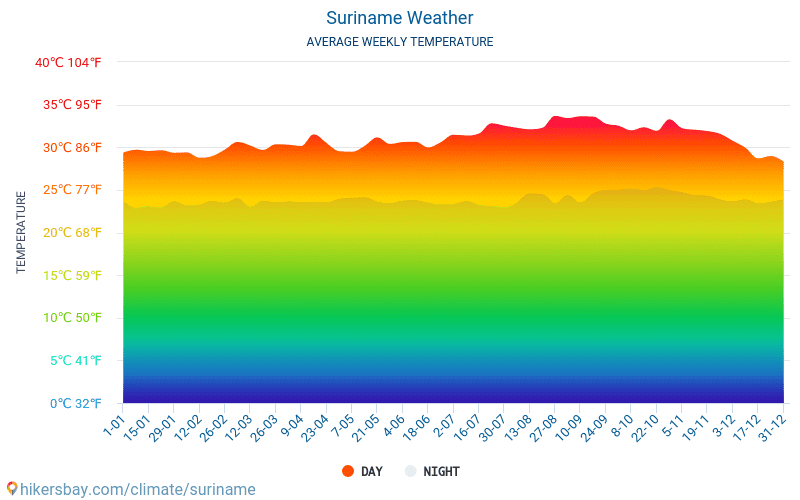
Precautions in Remote Areas
Suriname’s interior regions can be remote and less accessible. If you plan to venture into these areas, it is recommended to do thorough research, seek advice from local authorities or tourism agencies, and consider traveling with a reputable tour operator. Ensure you are properly prepared with necessary supplies, such as insect repellent, sunscreen, and sufficient food and water.
Health Concerns and Vaccinations
Before traveling to Suriname, it is essential to consult with a healthcare professional or travel medicine clinic to receive the appropriate vaccinations and medical advice. Common vaccinations recommended for Suriname include tetanus, diphtheria, hepatitis A and B, and typhoid. Malaria prophylaxis may also be necessary for certain areas, so consult with your healthcare provider about the specific region you plan to visit.
Visa Requirements and Travel Logistics
It is important to familiarize yourself with Suriname’s visa requirements and travel logistics before your trip. Here are some essential details to keep in mind:
Visa Application Process
Depending on your nationality, you may require a visa to visit Suriname. The visa application process can vary, so it is advisable to check with the Surinamese embassy or consulate in your country for specific requirements. Ensure that your passport is valid for at least six months beyond your planned departure date from Suriname.
Entry and Exit Requirements
Upon arrival in Suriname, you will be required to present a valid passport, visa (if applicable), return or onward ticket, proof of accommodation, and sufficient funds to cover your stay. It is essential to have all the necessary documents prepared to avoid any complications during immigration procedures.
Transportation Options within Suriname
Suriname has a well-connected transportation network that allows for easy travel within the country. The most common modes of transportation include taxis, minibusses, and boats. In Paramaribo, taxis are readily available and can be hailed from the streets or arranged through hotels. Minibusses are a popular and affordable option for traveling between cities and towns. Boat services are also available along the rivers, providing access to remote communities and nature reserves.
Accommodation Choices
Suriname offers a range of accommodation options to suit different preferences and budgets. From luxury resorts and boutique hotels to guesthouses and eco-lodges, there is something for every type of traveler. In Paramaribo, you will find a variety of accommodations in different neighborhoods, allowing you to choose an area that best suits your interests and convenience. Outside of the capital city, you can find lodges and resorts nestled in pristine natural surroundings, offering a tranquil retreat.
Local Customs and Etiquette
Understanding and respecting the local customs and etiquette is essential when visiting Suriname. Here are some tips to ensure cultural sensitivity:
Greeting and Interaction Etiquette
Surinamese people are generally warm and welcoming. It is customary to greet people with a handshake and make eye contact. When meeting someone for the first time, it is polite to address them using their formal title (Mr., Mrs., or Miss) followed by their last name. When visiting someone’s home, it is customary to bring a small gift such as flowers, chocolates, or a souvenir from your home country.
Respecting Local Traditions
Suriname is a country with diverse cultural traditions, and it is important to respect and appreciate these customs. When visiting cultural sites, such as temples or historical landmarks, it is customary to dress modestly and remove your shoes before entering. It is also important to seek permission before taking photographs, particularly of people, out of respect for their privacy.
Language Considerations
Suriname is a multilingual country, with Dutch being the official language. However, several other languages are widely spoken, including Sranan Tongo (Surinamese Creole), Hindi, Javanese, and various Indigenous languages. English is also commonly spoken, particularly in tourist areas. Learning a few basic phrases in the local languages, such as “hello” (bonjour), “thank you” (dank u wel or terima kasih), and “goodbye” (tot ziens or selamat tinggal), can greatly enhance your interactions with locals.
Tips for Cultural Sensitivity
To ensure cultural sensitivity during your visit to Suriname, consider the following tips:
- Dress modestly, particularly when visiting religious or traditional sites.
- Respect the traditions and customs of the various ethnic communities.
- Ask for permission before taking photographs of people.
- Be mindful of the cultural significance of certain gestures and symbols.
- Avoid discussing sensitive topics such as politics or religion unless invited to do so.
- When dining in local establishments, it is customary to wait until everyone has finished eating before leaving the table.
Sustainable Tourism Practices
Suriname’s natural beauty is its biggest asset, and responsible travel is crucial to preserving this pristine environment. Here are some sustainable tourism practices to consider during your visit:
Responsible Travel Initiatives
Suriname is committed to sustainable tourism practices and promotes responsible travel initiatives. It is important to support local businesses and tour operators that prioritize environmental conservation, community engagement, and cultural preservation. Choose accommodations and activities that have eco-friendly practices in place, such as waste reduction, energy conservation, and support for local communities.
Eco-Conscious Tours and Activities
Many tour operators in Suriname offer eco-conscious tours and activities that allow you to explore the country’s natural wonders while minimizing your environmental impact. These tours focus on sustainable practices such as low-impact transportation, waste management, and education about the importance of biodiversity conservation. By choosing these eco-conscious options, you can actively contribute to the preservation of Suriname’s natural beauty.
Supporting Local Communities
When visiting Suriname, aim to support local communities by purchasing locally made souvenirs, dining at local restaurants, and staying in locally owned accommodations. This direct support helps to boost the local economy and preserve the cultural heritage of Suriname. Engage in cultural exchanges with local residents to gain a deeper understanding of their way of life and foster meaningful connections.
Preserving Suriname’s Natural Beauty
Suriname is home to pristine rainforests, diverse ecosystems, and endangered species. It is essential to make conscious choices to preserve this natural beauty. Respect designated trails and protected areas when exploring nature reserves. Avoid purchasing products made from endangered species or illegal wildlife trade. Dispose of waste responsibly and follow the principles of leave-no-trace to minimize your ecological footprint.
Conclusion: Your Unforgettable Suriname Experience
Suriname offers a wealth of natural and cultural wonders, creating an unforgettable travel experience for every visitor. By understanding the country’s climate and planning your trip accordingly, you can maximize your adventure in this tropical paradise. Whether you choose to visit during the dry season to explore the rainforests or immerse yourself in the lush landscapes of the wet season, Suriname promises a rich tapestry of experiences. Embrace the cultural diversity, savor the culinary delights, and venture into the natural wonders that make Suriname a truly unique destination. Your Suriname experience awaits, so start planning your journey to this tropical gem today.